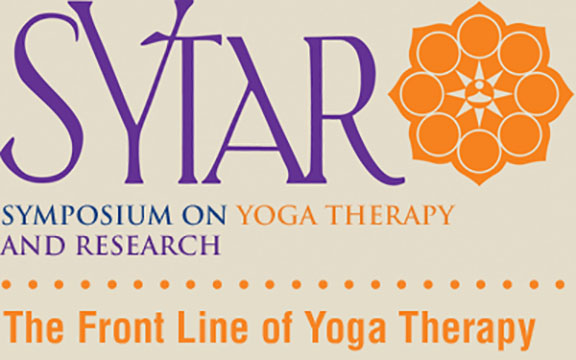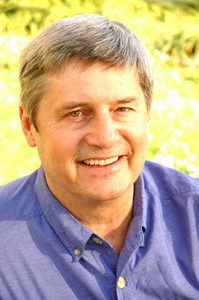 John Kepner, M.A., M.B.A., executive director of the International Association of Yoga Therapists (IAYT), has been at the forefront of developing publications, conferences, standards, and a professional identity for the field of Yoga therapy for more than a decade. In this interview, he reflects on that journey and how the SYTAR and SYR conferences developed.
John Kepner, M.A., M.B.A., executive director of the International Association of Yoga Therapists (IAYT), has been at the forefront of developing publications, conferences, standards, and a professional identity for the field of Yoga therapy for more than a decade. In this interview, he reflects on that journey and how the SYTAR and SYR conferences developed.
Integral Yoga Magazine (IYM): What is IAYT’s mission?
John Kepner (JK): The IAYT mission is to establish Yoga as a recognized and respected therapy. I consider that like a sutra—there are a lot of implications packed into that one sentence. What would you need to establish Yoga therapy in the West? You need professional credibility. How do you establish that? One of the first ways is to establish a credible professional journal. IAYT has published the International Journal of Yoga Therapy since 1990, so we took it to peer review in 2005. It was accepted into PubMed (the database of medical references operated by the United States National Library of Medicine) in 2011.
Another important pillar for a growing field is to develop professional conferences for Yoga therapists—to meet peers, network and receive continuing education. Once we established an annual conference, we also had a forum to discuss all the issues in our field. We hoped to get 400 people to attend the first SYTAR, but we sold out at 800. The reason was that those working in the field felt isolated and didn’t have colleagues in their town, so they were thrilled to finally have a chance to meet others from around the US and over 30 countries. These conferences helped Yoga therapists forge a professional identity, which then puts us all on a bigger map.
IYM: Was the idea to become part of the integrative medicine field?
JK: We believe Yoga is one of the solutions to the healthcare challenges our society faces. As such, we’d like to present Yoga as a valuable practice which can be integrated within the conventional healthcare system and can also stand alongside as well, as a complementary and alternative medicine (CAM) practice. Yoga is often a poster child for a holistic approach to healthcare. It’s a nice visual image, but Yoga was never at the table when they talked about integrative, complementary and alternative medicine policy. We weren’t licensed, we had no standards and we weren’t organized.
IYM: How did you get invited to sit at the table?
JK: We joined the Academic Consortium for Complementary & Alternative Health Care (ACCAH—a consortium of naturopathic physicians, acupuncturists, chiropractors, massage therapists and direct-entry midwives). That consortium is a counterweight to a consortium of medical schools that are interested in integrative medicine. I’d been looking for a seat for Yoga at the healthcare policy table for years. So when ACCAHC formed, I knocked at the door and asked, “Would you let us in?” They said yes, but only if we established standards. What I didn’t know at the time was that they debated fiercely about whether to let us in. The main argument against us was because we were unlicensed and they were licensed. But then they said, “We were suppressed for decades. We’re not going to do that to emerging health care people. We will help them instead.”
IYM: So standards were needed?
JK: Absolutely, but note, standards don’t prescribe details such as how to do triangle pose. We use the phrase “standards, but not standardization.” In America, if you want to call yourselves “therapists,” you need standards. ACCAH is very helpful to its members, so they came to our conferences, gave presentations, inspired us and taught us how to develop standards. We also brought in other knowledgeable people to talk to us. We worked on standards for more than two years. We published lots of draft versions and reviewed them at meetings of schools at SYTAR. In July 2012 the final version was published on our website. These standards, like all professional standards, are based on competencies, and were developed by peers and address what it is that Yoga therapists need to know in order to practice safely and effectively. During SYTAR 2013, all the afternoon sessions are related to one or more of the competencies. It’s not just about setting standards, but it’s also about peers teaching peers.
IYM: Are there colleges and universities creating training programs?
JK: The standards are roughly at the level of a professional Masters degree, and now some colleges are exploring the idea of offering such. For example, Maryland University of Integrative Health is an accredited university seriously proposing a Masters program in Yoga therapy. I met them and was very impressed. Other colleges on the West coast have been calling saying they can incorporate not just our standards in their curricula but, if people take an IAYT-accredited therapist training program, those colleges can incorporate that into their graduate programs. So, these are exciting developments.
IYM: How did the idea for the SYR conference develop?
JK: During the first SYTAR in 2007, we had a research track. There we met Sat Bir Khalsa, a Harvard professor and great karma yogi, whose mission in life is to establish Yoga research as an important pillar in bringing Yoga into mainstream health care and the mainstream educational system. He’s an extremely smart, dedicated yogi and researcher. He told us that we needed a stand-alone research conference where researchers wouldn’t be overwhelmed by all the other practitioners, where they could recognize each other in the halls, meet outside, take walks and share ideas—all the things that happen at normal research conferences. We finally were able to start this in 2010, at the Himalayan Institute.
IYM: What are some highlights of the SYR conferences?
JK: We have a limited number of presentations by senior researchers and lots of poster sessions. Poster sessions are where researchers put up large, stylized illustrations of their research: pictures, objectives, results. They stand by them and people come and talk to them about the research. That’s a ritual at research conferences and a great way to build relationships and spur ideas and collaboration. We had 40 such posters at the first SYR! The hall was packed and there was so much excitement in the air. I stress this because, to develop a field in the West called “therapy,” you need conventional research. The doctors and the hospitals are going to ask: “What’s the evidence base?” We are supporting that by providing a forum for people to present their ideas and research, meet others and collaborate. According to Sat Bir, SYR is the only dedicated, widely publicized Yoga research conference in the West, if not the world.
IYM: Dr. Dean Ornish, a senior student of Swami Satchidananda, was the first SYR keynote speaker?
JK: Yes! Swami Satchidananda can be very proud of Integral Yoga’s very rich Yoga therapy and research history. Integral Yoga has been a big contributor to the field. Dean Ornish’s work and all those streams coming from Swami Satchidananda continue to develop. I was in India in December 2012 and I went to the Yoga Institute and Kaivalyadham and sat in on panels about medical advances in Yoga research. They all knew of Dean Ornish and were talking about his research studies and some had extended them in various ways. What’s exciting is that Yoga therapy today is multi-lineage and that’s good for the field. Dean Ornish’s model is a team approach and it’s an important model—one that has finally been accepted by Medicare. In order to have a Yoga therapy field, however, it can’t be based on just one lineage. IAYT’s role is to be an association of lineages and that’s a good role for us. Integral Yoga is a big part of this field.
IYM: Tell us how the conferences have evolved over the years.
JK: We’ll will always be talking about applications of Yoga therapy and its integration into healthcare. We now have over 100 member schools, including Integral Yoga. We want to open up a dialogue wherein all the school program directors can talk to their peers: How do you do it? How do you assess your students? Integral Yoga has a lot of faculty and courses to draw upon to meet competency requirements. Most schools, however, are mom and pop operations and can’t offer all the required courses. We’re hoping for a lot of peer support, networking and exchange.
The field is really growing and these conferences reflect that. If you’re someone considering starting a Yoga therapist training program, this is where to come to see what others are doing. Or, if you want to take a training program, the best way is to look around at various programs and you can do that easily by attending SYTAR. If you are already a Yoga therapist, SYTAR is great for keeping up with your continuing education requirements. And, if you’re a school, come to the conference being organized by the only accreditation organization in the U.S.: IAYT!
About John Kepner:
 John Kepner, M.A., M.B.A., is a practicing Yoga teacher and therapist with a professional background in economics, finance and non-profit management. He holds teacher and therapist certifications from the American Viniyoga Institute and a teaching certification from A.G. Mohan in Chennai, India. His work for IAYT and his writings often have an economic and public policy perspective. In recent years, John focused on organizing IAYT’s practitioner and research conferences, developing educational standards for the training of Yoga therapists and now accrediting programs that meet those standards. For more information, www.iayt.org and www.sytar.org.
John Kepner, M.A., M.B.A., is a practicing Yoga teacher and therapist with a professional background in economics, finance and non-profit management. He holds teacher and therapist certifications from the American Viniyoga Institute and a teaching certification from A.G. Mohan in Chennai, India. His work for IAYT and his writings often have an economic and public policy perspective. In recent years, John focused on organizing IAYT’s practitioner and research conferences, developing educational standards for the training of Yoga therapists and now accrediting programs that meet those standards. For more information, www.iayt.org and www.sytar.org.
Source: Integral Yoga Magazine, Spring 2013

